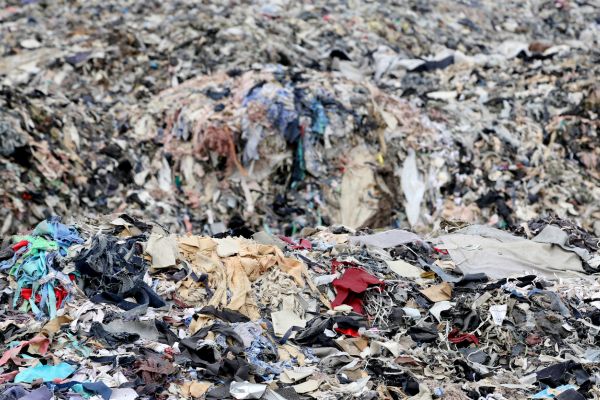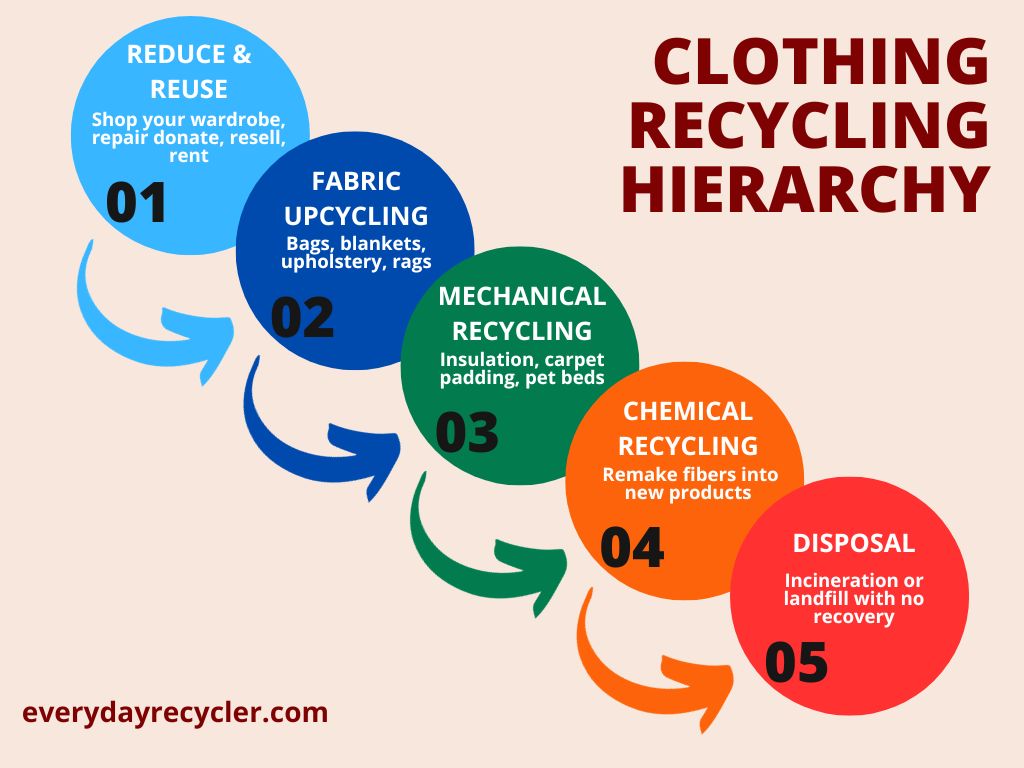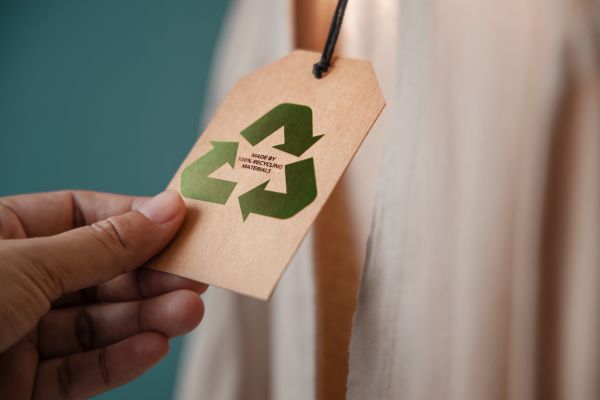With a growing focus on sustainability and environmental awareness, the fashion industry is at a juncture. Change is vital in a world where fast fashion is still a dominant force.
The textile industry is responsible for massive amounts of waste and pollution. More than 100 billion garments are produced every year, according to McKinsey & Company. Each item is worn, on average, seven times before being discarded, generating around 92 million tons of textile waste globally per year.

Figure 1. A truckload of wasted clothing is landfilled or burned every second.
While the second-hand market helps keep clothes in use longer, it cannot address the end-of-life challenges of these textiles. Unfortunately, only about 1% of clothing is recycled, and every second, a truckload of clothing is landfilled or burned.
In this post, we cover the best way to recycle clothes while also looking at the common problems and potential solutions to achieve circularity in fashion.
Can clothes be recycled?
Clothes can indeed be recycled. In fact, there are several different methods for recycling clothes. Figure 2 below details the available solutions in a hierarchy similar to the well-known waste hierarchy diagram.

Figure 2. The hierarchical steps for reuse and recycling of textile waste.
Reducing the amount of clothing made and purchased is the single most important change we can make. Second to this is to keep items in use as long as possible. This can significantly reduce the environmental impact of fashion.
Thrift stores, second-hand shops, and online resale platforms like ThredUp and Poshmark offer great opportunities to extend the life of clothes. Clothing rental models are another fantastic way to reduce and reuse. Companies like Gwynnie Bee offer consumers the opportunity to rent from their extensive clothes closet and reduce their impact.
When clothing is no longer wearable or useful to anyone, several techniques are available to recycle the fabric and prepare it for use in new products. These methods include:
- Fabric upcycling: Textiles or fabrics can be recycled into new products by upcycling them into clothing, accessories, or even upholstery. Upcycling reduces the need for new materials and extend the life of existing material. Fabric may also be downcycled, where it is cut up into smaller pieces and used as rags for industrial applications.
- Mechanical Recycling: This process involves mechanically breaking down old clothing and textiles into fibers that can be used to create new clothing or other products. The textiles are typically cleaned, shredded, and spun into new yarns for fabric production.
- Chemical Recycling: These methods use various chemical processes to break textiles down into their raw components. These components can then be used to create fibers that can be spun into new yarns. Chemical recycling can be particularly useful for fabrics that are difficult to recycle through traditional mechanical methods.
The Challenges associated with Clothing Recycling
While recycling clothing is not a novel concept, it remains far from reaching its full potential. Currently, only a small fraction of clothing is recycled, and due to the many obstacles encountered, the procedure is often inefficient and costly.
Here are some of the key challenges that must be addressed:
- Complex Materials: Most modern clothing is made from a blend of materials, such as cotton, polyester, and elastane, making recycling challenging. In most processes, successful recycling requires these different materials to be separated, an approach that can be costly and energy-intensive.
- Chemical additives: Many fabrics have been treated with chemical additives to create specific characteristics such as water- or flame-repellent and wrinkle-resistant. These chemicals can impact the effectiveness of recycling, particularly in chemical recycling.
- Design: It seems strange to say that fashion lacks design, but as with many products, most fashion pieces are not designed with their end-of-life in mind. The challenges of recycling are much greater when end-of-life processing is an afterthought.
- Infrastructure: From collecting worn-out clothing to processing materials, an efficient and widespread system needs to be established for clothing recycling. Although some retailers have established consumer collection programs, these systems and infrastructure are scarce.
- Consumer Behavior: Changing consumer behavior is crucial but tricky. Education and awareness campaigns are essential to shift consumers’ mindsets away from cheap, disposable fashion. Fortunately, many consumers are becoming aware of the environmental consequences of their fashion choices and choosing recycled clothing brands.
The Roadmap to Full Clothing Recycling
Despite these challenges, there are some promising developments in our road to full clothing recycling. Inspiring companies are taking up the challenge with innovative approaches. Here are some exciting projects underway:
- Swedish company Renewcell has opened the first industrial-scale chemical textile-to-textile recycling facility following 10 years of development. Their recycling technology uses chemicals to break down used cotton and other cellulose-rich textiles and transform them into a new biodegradable raw material called Circulose® pulp, ready for use in new garments.
- Timberland, the winner of last year’s Ellen MacArthur Foundation Award for Circular Economy, is leading the way in circular fashion. Not only do they design durable and recyclable products, but they’ve cultivated a business model focusing on take-back and resale options to prolong the useful life of their accessories.
- Instead of the up to 25 components that the majority of jackets are constructed of, the Italian garment company Napapijri designed a jacket using just one material. This design approach makes recycling easier, increasing the likelihood the material is successfully made into a new product. They also have a take back program for worn-out jackets to make sure they are recycled.
- Worn Again Technologies has partnered with Sulzer and H&M to develop a recycling process focused on recovering PET (polyester), one of the most common components of clothing, along with cotton or cellulosics from end-of-life textiles. They clean and process the material and remove dyes and other chemical additives to produce 100% PET resin and cellulosic pulp, both of which can be spun into new fiber and reused in new garments.
- Many sustainable fashion brands have switched to using recycled materials, including recycled polyester and nylon, in their clothing production. Even though the ultimate goal is textile-to-textile recycling, clothes made with recycled plastic from water bottles or other waste materials are an important step towards a more sustainable fashion industry. They help to save raw resources and use waste material that may otherwise end up in landfills. By supporting these recycled clothing companies, consumers can create demand for recycled clothes and promote the transition to a more sustainable fashion industry.
The road to achieving full clothing recycling is challenging, but it’s a journey we must undertake to address the environmental crisis created by the fashion industry. The challenges are substantial, from complex materials to consumer behavior, but progress is being made with the concerted efforts of fashion brands, technological innovators, governments, and consumers.
As awareness grows and sustainable practices become more accessible, we can hope for a future where fashion no longer comes at the cost of our planet.














